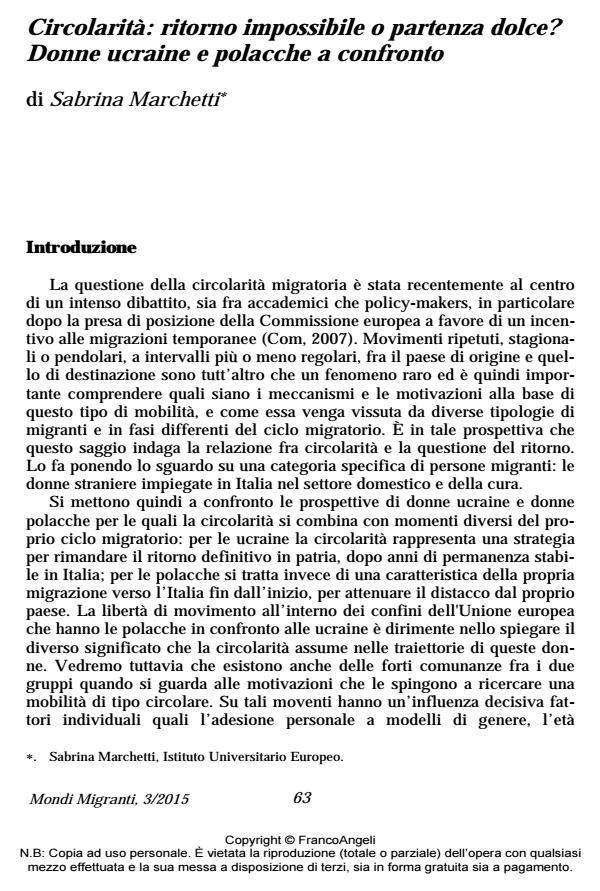Circolarità: ritorno impossibile o partenza dolce? Donne ucraine e polacche a confronto
Titolo Rivista MONDI MIGRANTI
Autori/Curatori Sabrina Marchetti
Anno di pubblicazione 2016 Fascicolo 2015/3
Lingua Italiano Numero pagine 19 P. 63-81 Dimensione file 76 KB
DOI 10.3280/MM2015-003004
Il DOI è il codice a barre della proprietà intellettuale: per saperne di più
clicca qui
Qui sotto puoi vedere in anteprima la prima pagina di questo articolo.
Se questo articolo ti interessa, lo puoi acquistare (e scaricare in formato pdf) seguendo le facili indicazioni per acquistare il download credit. Acquista Download Credits per scaricare questo Articolo in formato PDF

FrancoAngeli è membro della Publishers International Linking Association, Inc (PILA)associazione indipendente e non profit per facilitare (attraverso i servizi tecnologici implementati da CrossRef.org) l’accesso degli studiosi ai contenuti digitali nelle pubblicazioni professionali e scientifiche
Questo saggio indaga la relazione fra circolarità e la questione del ritorno prendendo in esame il caso delle donne straniere impiegate in Italia nel settore domestico e della cura. Nel confronto fra le prospettive di donne ucraine e donne polacche emerge come la circolarità possa combinarsi con momenti diversi del ciclo migratorio: per le ucraine la circolarità rappresenta una strategia per rimandare il ritorno definitivo in patria, dopo anni di permanenza stabile in Italia; per le polacche si tratta invece di una caratteristica della propria migrazione verso l’Italia fin dall’inizio, per attenuare il distacco dal proprio paese. La libertà di movimento all’interno dei confini dell'Unione europea che hanno le polacche in confronto alle ucraine è dirimente nello spiegare il diverso significato che la circolarità assume nelle traiettorie di queste donne. Vedremo tuttavia che esistono anche delle forti comunanze fra i due gruppi quando si guarda alle motivazioni che le spingono a ricercare una mobilità di tipo circolare.
Parole chiave:Migrazione circolare, Lavoro domestico, Ucraina, Polonia, Italia, Ciclo migratorio.
Sabrina Marchetti, Circolarità: ritorno impossibile o partenza dolce? Donne ucraine e polacche a confronto in "MONDI MIGRANTI" 3/2015, pp 63-81, DOI: 10.3280/MM2015-003004